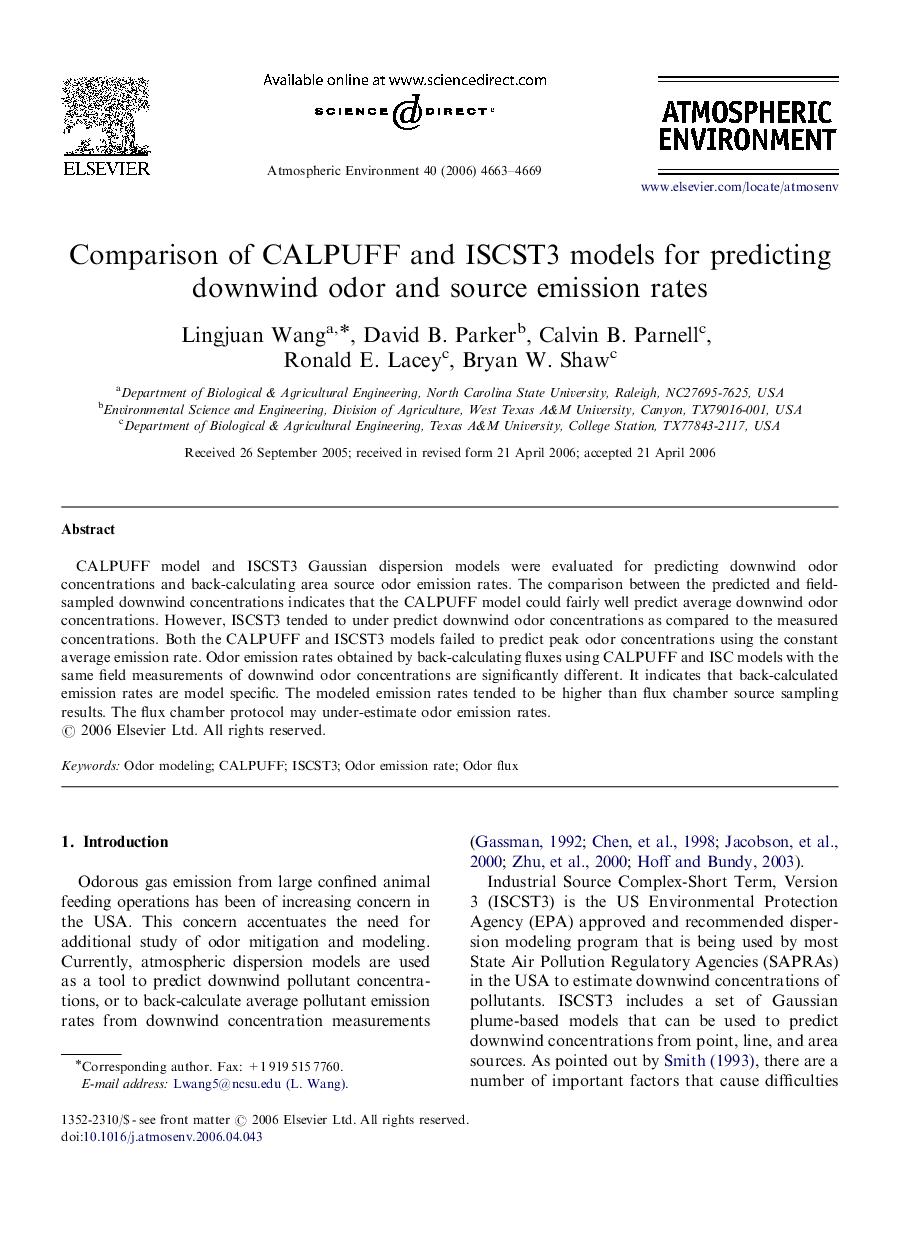| Article ID | Journal | Published Year | Pages | File Type |
|---|---|---|---|---|
| 4443906 | Atmospheric Environment | 2006 | 7 Pages |
CALPUFF model and ISCST3 Gaussian dispersion models were evaluated for predicting downwind odor concentrations and back-calculating area source odor emission rates. The comparison between the predicted and field-sampled downwind concentrations indicates that the CALPUFF model could fairly well predict average downwind odor concentrations. However, ISCST3 tended to under predict downwind odor concentrations as compared to the measured concentrations. Both the CALPUFF and ISCST3 models failed to predict peak odor concentrations using the constant average emission rate. Odor emission rates obtained by back-calculating fluxes using CALPUFF and ISC models with the same field measurements of downwind odor concentrations are significantly different. It indicates that back-calculated emission rates are model specific. The modeled emission rates tended to be higher than flux chamber source sampling results. The flux chamber protocol may under-estimate odor emission rates.
